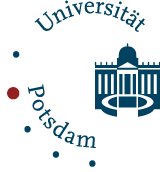
Berlin’s Australian Archive
Addressing the Colonial Legacies of Natural History
Following in the footsteps of Alexander von Humboldt, nineteenth-century German naturalists sought to explore and categorize the world. To them, the Australian continent offered a welcome opportunity to test Humboldt’s methods on a terrain hitherto largely unknown to European voyagers and researchers. Long before the arrival of these highly influential scholars, however, the place now called Australia was already intimately known. Its lands, waters, and skies had been named and classified by First Nations people, within Indigenous knowledge systems and languages. German naturalists at times heavily relied on the expertise of First Nations intermediaries, who acted as guides, collectors, trading partners or translators in their endeavours. From preserved animals and plants to rock samples, or drawings of fish and birds - the vast natural history collections held by museums across Australia and Germany today are not only objects of European scientific inquiry. They also embody Indigenous knowledge and stories about the natural world that have long been overlooked or silenced by the dominant frameworks of Western science.
How can this knowledge be recovered today in order to produce an entangled and truly global history of these collections that acknowledges their continuing significance to First Nations peoples?
Our project tackles this question by bringing together knowledge holders and experts from First Nations communities with museum and university researchers across Australia and Germany. Working collaboratively, we will critically investigate the collections associated with four prominent Prussian naturalists, who were active in 19th-century Southeastern Australia: Wilhelm von Blandowski, Ferdinand von Müller, Richard Schomburgk and Gerhard Krefft.
For further information & insights into the work in progress, visit
Guided by the members of the project’s Aboriginal Advisory Board, our interdisciplinary, cross-cultural and cross-sector team strives to:
- Reassemble this material record across the national, taxonomic and disciplinary divides that have led to its dispersal between multiple collecting institutions in Australia and Germany.
- Analyze how the making, circulation and scholarship of these collections interacted with colonial frameworks of knowledge production - including their infrastructural, ideological and economic foundations - in order to gain a critical understanding of the processes and conditions that severed these materials from the Indigenous communities and lands they are historically and culturally connected to.
- Develop sustainable and culturally appropriate forms of access to Berlin-based collections for First Nations communities, to whom they are relevant.
- Engage in a dialogic transfer of knowledge in order to unearth and reactivate the interconnected nature of Indigenous knowledge embodied in Berlin’s Australian Archive, its relationship to Indigenous histories and lived cultural worlds.
- Develop guidelines that translate the historical and cultural significance and potentially sensitive nature of the collections into proper protocols for research, preservation, and display in German museums.
Project Partners
- Museum für Naturkunde
Leibniz Institute for Evolution and Biodiversity Science, Berlin
- Ethnologisches Museum
Staatliche Museen zu Berlin
- Museums Victoria
Melbourne
- Royal Botanic Gardens
Melbourne
- The Australian Museum
Sydney




